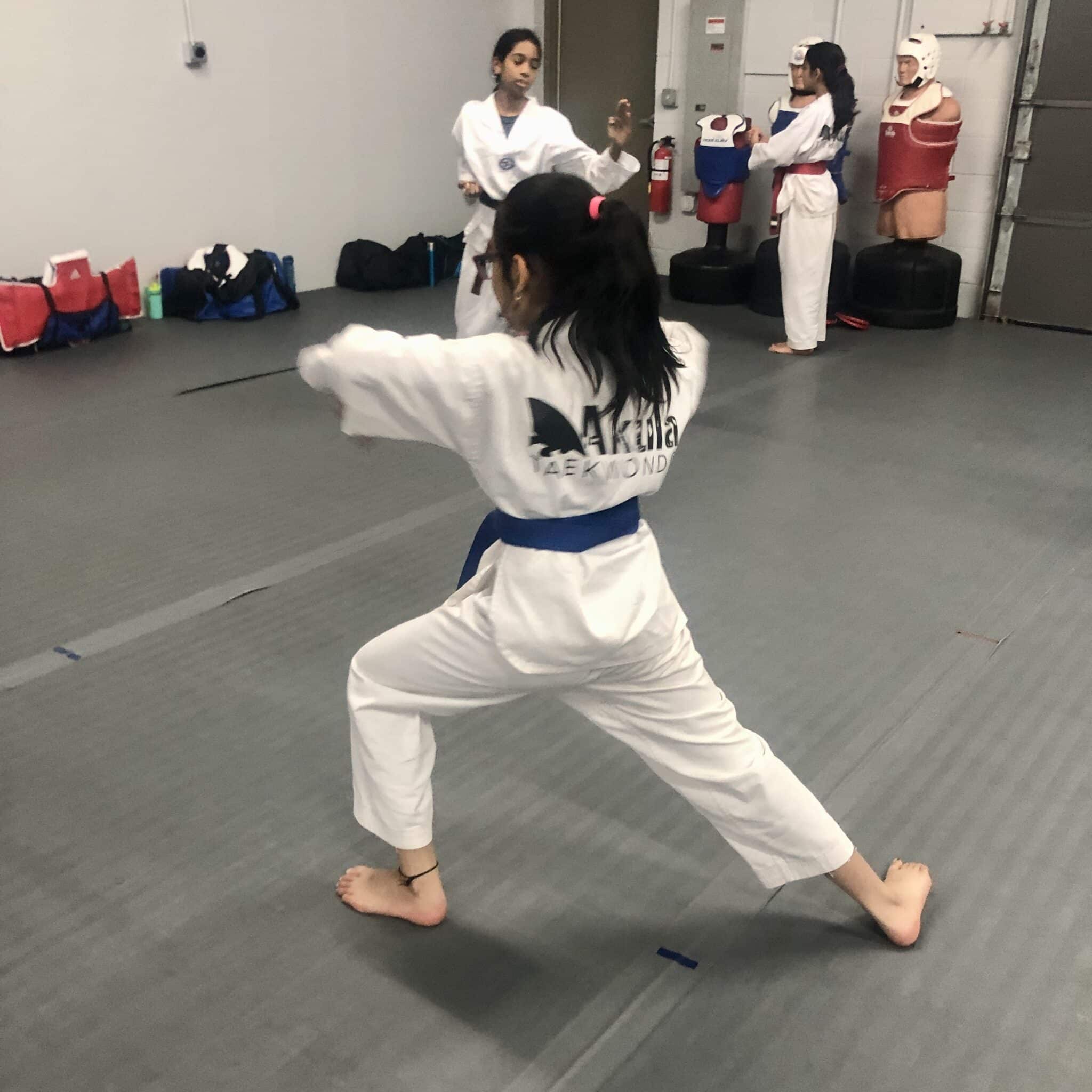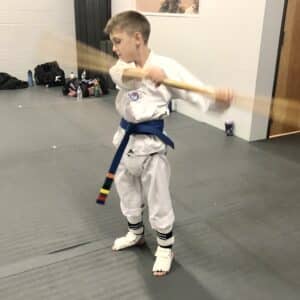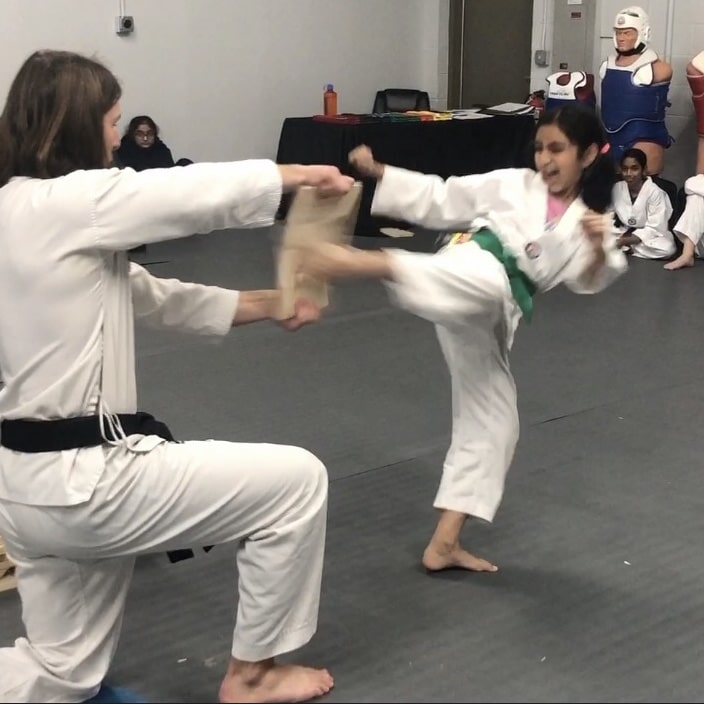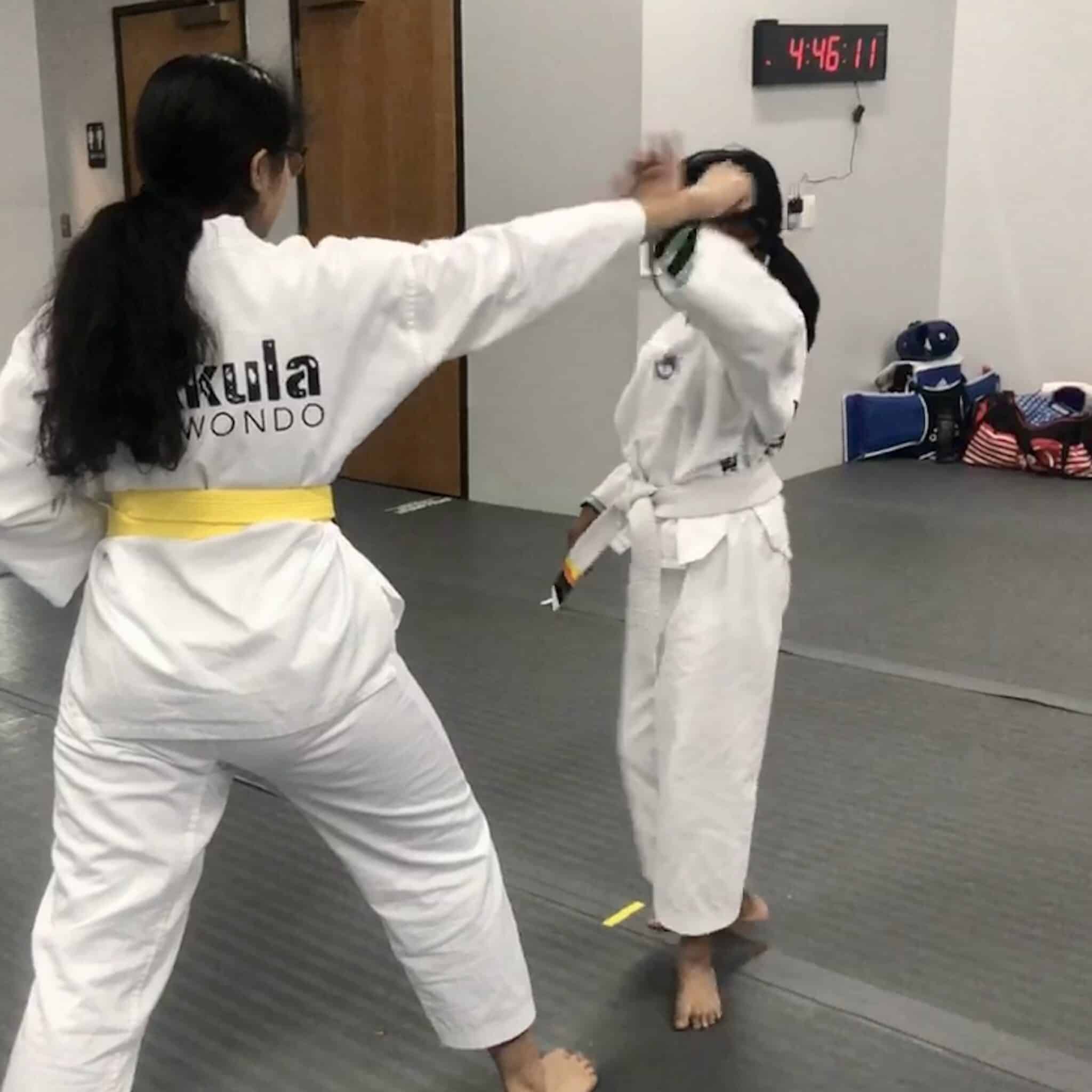Traditional Martial Arts Instruction
Akula’s Taekwondo curriculum focuses on traditional martial arts training philosophies, balanced with modern fitness principles. Thus, we encourage students to become true martial artists through lifestyle changes and long-term commitment.
 Poomsae in the Taekwondo Curriculum
Poomsae in the Taekwondo Curriculum
Poomsae (Form) is an essential part of Akula’s Taekwondo curriculum. In forms practice, students execute a systematic, prearranged sequence of martial techniques. And so our students develop proper movements, as well as mental and physical fortitude. Poomsae’s choreographed kicks, blocks, and hand techniques are precise and controlled. Thus, Taekwondo students develop concentration, balance, precision, power, speed, and agility.
According to 8th degree black belt Grand Master Lance Strong, the functional strength required for fighting can only be developed through exercises that work major muscle groups and also improve the condition and flexibility of the fascial planes. Forms training has a huge effect on developing fascial strength and the ability to apply that strength in many different directions, while still maintaining the body’s centre and balance.
At Akula Taekwondo, students learn Olympic Style Poomsae (Forms/Kata).
 Sparring in the Taekwondo Curriculum
Sparring in the Taekwondo Curriculum
Sparring is the practical application of kicks, punches, and blocks against an opponent in a controlled, safe environment.
Benefits of Sparring
- improves reaction and reflexes
- develops fitness and cardiovascular ability
- builds confidence
All sparring at Akula Taekwondo is performed with the student’s level of experience and training in mind. Safe practices are maintained and safety equipment is required.
We spar according to Olympic Taekwondo rules.
 Weapons
Weapons
Weapons training is incorporated into Akula’s curriculum to add variety and expand martial arts skills. Because the weapons used in our classes are powered by the human body, enhanced wrist flexibility, muscle strength, core stability, tendon strength, dexterity, balance, body positioning, and coordination result.
 Breaking
Breaking
Board Breaking is a favorite activity among students. We include board breaking in our martial arts curriculum because the activity builds mental power, concentration, and speed–demonstrated on a material object. In this way, Board Breaking may be considered a form of martial arts target practice. Students learn to focus their full power on a specific point.
Fitness
Physical fitness is both a foundation and byproduct of martial arts training. Therefore, fitness training is an integral part of our classes. Every aspect of training builds strength, flexibility, and cardiovascular health. Building physical fitness leads to improvements in physical and mental health.
Self-Defense
 Learning martial arts is one of the smartest things you can do to gain self-defense skills. We teach safe and proven responses to attacks. Students become proficient at responding to a variety of attacks. Further, they are taught the most simple, direct, and effective combination of techniques at the right moment.
Learning martial arts is one of the smartest things you can do to gain self-defense skills. We teach safe and proven responses to attacks. Students become proficient at responding to a variety of attacks. Further, they are taught the most simple, direct, and effective combination of techniques at the right moment.
